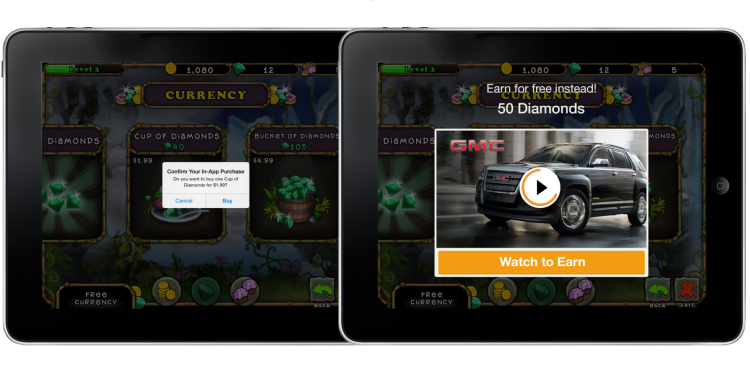Everyone is trying to sell mobile-game developers a way to make money on iOS and Android. Tapjoy is no different, but it’s trying to back up its claims with data.
The mobile ad-technology company came to GamesBeat with its latest case study regarding the success of My Singing Monsters from developer Big Blue Bubble. The studio found that it could boost the “effective cost per thousand impressions” (eCPM) that it charges marketers by using Tapjoy’s SDK to target certain users at specific times with reward-based ads. That’s a long way of saying that Big Blue Bubble is making more money thanks to Tapjoy — which in fact ranks in the top ten of our game monetization companies. In fact, the company found that the targeted promos resulted in eCPMs between $5 and $15.
In the case study, Big Blue Bubble used Tapjoy’s Events feature to come in with an ad when a player was most in need of an in-game reward. For example, the studio would set up the games so that a player would get some Diamonds (the in-game currency) when they tried to purchase a virtual item only to find out they didn’t have enough. Players would also see a reward ad when they started a purchase but then decided to cancel.
“In both events, players have shown a clear interest in obtaining more Diamonds,” reads the case study. “But they are not quite committed to actually buying them. Before they can say, “forget it” and go on their way, [Tapjoy] enables Big Blue Bubble to offer a quick, easy way to earn Diamonds for free.”
Need help monetizing your app?
Learn what successful game developers do differently.
Players want something, and the game offers to help them get that if they watch an ad for GMC trucks or something else. This is exactly the type of non-intrusive ads that Tapjoy chief executive Steve Wadsworth spoke about during the GamesBeat conference in San Francisco earlier this month. He explained that incentivized commercials could create a sense of gratitude in the player.
The better a gamer feels about the experience, the more likely they are to click through and watch the promotional spot.
“Players responded very favorably to the timely and relevant advertising offers,” the report continues. “The ‘in-app purchase cancel’ event drove more than $5 eCPMs on Android and $9 on iOS. The ‘insufficient funds’ event delivered $10 eCPMs on Android and $15 on iOS.”
Tapjoy notes that in-app purchases didn’t dip because of this.
Of course, it’s important to keep in mind that a case study, by definition, is only capable of telling the story of a single case. The effectiveness of highly targeted rewarded ads may take a dive in other apps. But that’s something that free-to-play developers are probably willing to take a chance with.
VentureBeat's mission is to be a digital town square for technical decision-makers to gain knowledge about transformative enterprise technology and transact. Learn More

